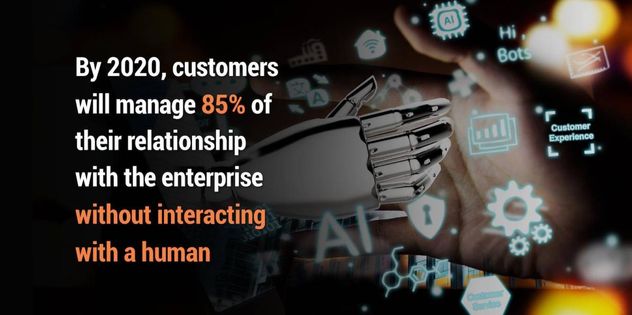
Jump To Section
Introduction
Have you ever stopped to count how many women are in the room? It’s not something most people do regularly, but for Lisa Sutherland, Senior Director of Emerging Markets at Rogers Communications, it’s a question her daughters have innocently asked her throughout her career: Why do you count the women in the room?
Because even in 2024, women are still underrepresented in the tech industry, particularly in leadership positions.
While progress is being made, deeply ingrained myths continue to discourage talented women from pursuing and advancing in tech careers. To help clear the path for the next generation, I had the pleasure of interviewing Lisa for the “Behind the Growth” podcast to get her insights on debunking these harmful misconceptions.
With over three decades of experience witnessing the evolution of the tech landscape firsthand, Lisa offers invaluable wisdom on how we can create a more inclusive and equitable industry. Let’s dive into four persistent myths that she’s encountered and why they simply don’t hold up.
Myth #1 – Tech is a “Boys’ Club”
Picture a typical tech startup: a dimly lit room buzzing with the sound of fingers flying across keyboards. Empty energy drink cans litter the tables alongside scattered takeout containers. And huddled over glowing screens are… well, you know the image. It’s likely a group of young men, sporting hoodies and headphones, intensely focused on their code.
This pervasive stereotype of tech being a “boys’ club” is one of the biggest hurdles women face. But according to Lisa, it’s a narrative rooted more in Hollywood than in historical reality. “Leading out of the Second World War, and even into the 1950s, computer programmers were mostly women,” she points out.
The image of meticulous code written out on paper and fed into massive machines might not be as flashy as today’s sleek tech offices, but it underscores a crucial point: women have always been pioneers in tech, even if their contributions have been overshadowed.
This historical erasure is precisely what makes movies like “Hidden Figures” so important, as Lisa highlights. The film sheds light on the brilliant African American women whose mathematical prowess was instrumental to NASA’s success, even as they faced segregation and discrimination. These stories challenge the narrow lens through which we often view tech achievements.
Lisa further underscores this point by recalling her own experience attending tech events: “If you imagine a hackathon […] what’s that picture that you see?” It’s often the same stereotypical image—a homogeneous group lacking diversity. By acknowledging these ingrained biases, we can start to break them down and create a more welcoming and inclusive tech culture.
Myth #2 – Women Aren’t “Naturally” Suited for Tech
The notion that women somehow lack the inherent aptitude for tech is a damaging and persistent myth. It often rears its head in subtle ways, such as assumptions that women are less logical, less comfortable with numbers, or less drawn to technical fields. But as Lisa points out, these stereotypes are a relatively recent phenomenon.
“Think about computer programming when you had to draw [it] on a piece of paper and insert it into a machine,” she suggests. “Those were computer programmers, and it was vastly women.” This historical context is crucial.
In the early days of computing, programming was often viewed as detail-oriented and even secretarial — tasks often relegated to women. As technology evolved and became more lucrative and prestigious, the perception shifted, and it became increasingly masculinized.
This evolution reveals a fundamental truth: success in tech isn’t about innate ability determined by gender; it’s about skills, dedication, and, importantly, opportunity.
The fields of software development, data science, AI, and countless others require diverse talents, including problem-solving, creativity, and communication – none of which are exclusive to any gender.
By letting go of the limiting belief that women aren’t “cut out” for tech, we open doors for countless individuals to discover their potential and contribute to a more innovative future.
Myth #3 – Women Need to “Work Harder” to be Noticed

For many women in tech, especially those from older generations, the prevailing advice often boiled down to: put your head down, work hard, and wait to be recognized. It’s a well-intentioned sentiment, but as Lisa aptly points out, “Men were advocating for themselves and saying they could do the job, and women were waiting to be noticed.”
This disparity in self-promotion is a key factor contributing to the gender gap in leadership roles and compensation. While hard work is undoubtedly essential, it’s often not enough in a competitive industry where men are often socialized to be more assertive in promoting their accomplishments and vying for opportunities.
Lisa has observed a heartening shift in recent years, particularly among younger generations of women entering the tech workforce. “They are really learning to advocate for themselves, understand what they’re good at, and lean into those strengths,” she notes.
This proactive approach is essential. Women in tech must feel empowered to own their accomplishments, articulate their value, and negotiate for the recognition and opportunities they deserve. This includes seeking out mentors and allies who can amplify their voices and champion their growth.
Myth #4 – The Opportunities for Women in Tech Are Limited
It’s a stark reality: women remain significantly underrepresented in tech leadership roles, and the gender pay gap persists. The numbers can feel discouraging, leading many to believe that the opportunities for women in tech are inherently limited.
Lisa acknowledges this challenge, recalling a time when “there seemed to be this perception there was only enough room for one or two women around the table.” But she also emphasizes that this perception is changing, and companies are recognizing the value of building more diverse and inclusive teams.
Her example of the Apple Health app initially overlooking women’s health needs is a powerful illustration. This oversight not only alienated a significant portion of potential users but also demonstrated the crucial need for diverse perspectives in product development. When women have a seat at the table, the products and solutions created are better, more innovative, and more relevant to a wider range of people.
Lisa’s optimism shines through in her compelling analogy: “It’s a little bit like love,” she says. “There’s always enough love to go around for everybody if you make enough room in your heart.” By embracing this philosophy of abundance and actively “making room” for women in tech, companies can unlock a wealth of untapped talent, drive innovation, and create a more equitable and fulfilling industry for everyone.
Takeaway
It’s time to rewrite the narrative about women in tech. By debunking these persistent myths and fostering a more inclusive environment, we can unlock a wealth of untapped talent and create a future where everyone has the opportunity to contribute to a thriving tech industry.
Want to hear more from Lisa on this important topic? Tune into the full episode of Behind the Growth for a conversation you don’t want to miss!
Link to podcast
You can also tune in on your favourite channel:



